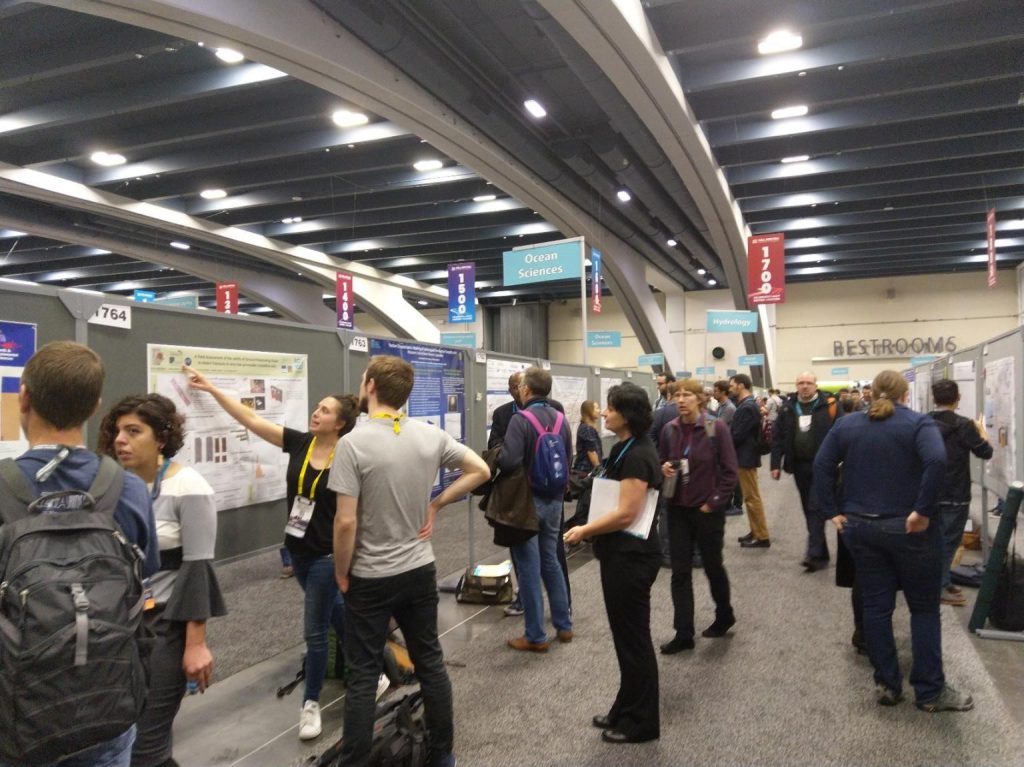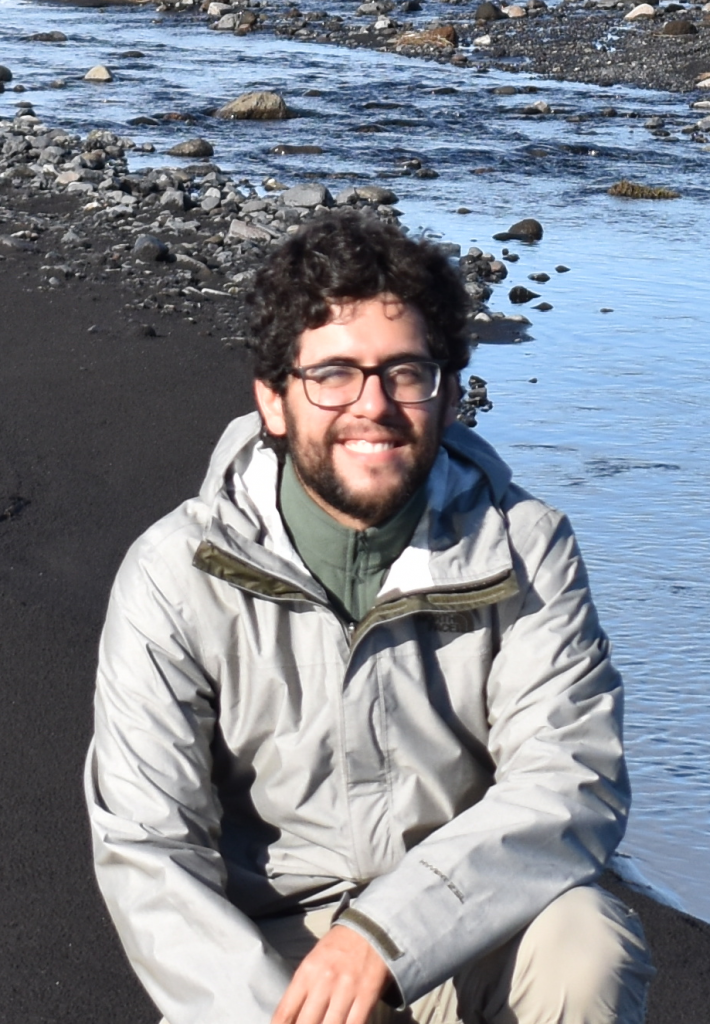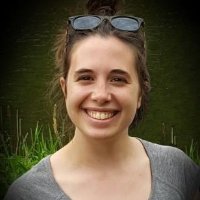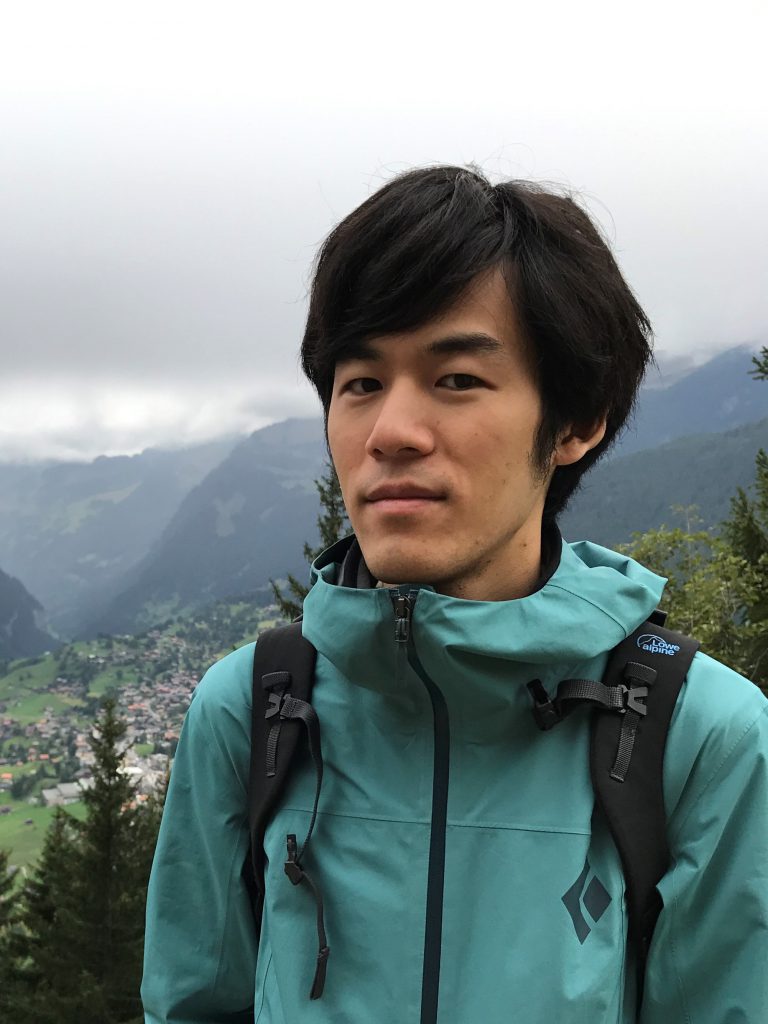
AGU Fall Meeting is the largest international Earth and space science meeting in the world (more than 25 000 attendees in 2019). After two dynamic meetings in New Orleans and Washington, D.C., AGU meeting returned last December to the Moscone Center in San Francisco to celebrate the past and inspire the future during this Centennial event.
Here are the testimonials of 6 ENIGMA ITN European PhD students: having the luck to receive feedback from other scientists and students, providing a different point of view concerning a specific study, and exchange ideas about an original topic is tremendously enriching for their research and for their experience as young researchers. Let’s hear them out!
“I enjoyed having the chance of meeting and talking with various researchers and big names that we usually can only meet through their publications and citations,” expressed Guilherme Nogueira, PhD student at the Helmholtz Centre for Environmental Research in Leipzig and part of the EU-funded project ENIGMA ITN, as he returned from the AGU Fall Meeting 2019. The conference of the American Geosphysical Union celebrated its centennial this year. In a digital age, such events contribute to spread the feeling of a scientific community across the world, by bringing people together beyond papers. They offer fellows opportunities to discuss their work and beyond, establishing personal connections across labs. It helps create the germs of future scientific collaborations. Although time-consuming and not so eco-friendly, participating gives in a condensed way the feedback, the network and opportunity that help one’s research path.
The sense of participating in conferences is the same as the core spirit of the ENIGMA ITN project they are part of. ENIGMA ITN is a EU-funded project (ITN – Innovative Training Network) training 15 PhD students on innovative methods for imaging process dynamics in subsurface hydrosystems. Developing a dynamic spatial representation of groundwater systems requires numerous expertise, data and methods from not only hydrology, but also geophysics, soil physics and biochemistry. The PhD students make the most of their research project through lab visits – the secondments – within the project network, regular network meeting and a common training program.

It was Jorge’s, one of the ENIGMA fellows based at the University of Liège, first time in such a large conference. He presented his last results on deep modelling for better imaging the subsurface: “When imaging the subsurface we can only put sensors on the surface or in a limited number of wells. The sparsity of such observations prevents us from directly obtaining a sharp image. In order to get such an image we can use additional information such as the expected spatial structure of geological materials, e.g. channels, lenses, dikes, etc. Constraining imaging methods to display these realistic patterns is, however, not straightforward. Our research uses recently developed deep generative models to constrain an efficient imaging method to display such realistic patterns.”
Going to San Francisco gave him the opportunity to replace his work in a greater perspective. “I really enjoyed the chance of putting my research in context with all other areas in the Earth sciences” he said. “I saw a lot of nice applications of machine learning and data-driven models in multiple areas different than my own (such as surface hydrology and seismology) of which I was not really aware of but that were insightful for my current research.”

This year, AGU celebrated its centennial by hosting special sessions on the history of geosciences. It was highly appreciated by Jorge: “I found the one on near surface geophysics to be quite insightful. It was a very nice summary of the development of different geophysical methods, covering both the instrumentation side and the processing and modeling side. In addition, the talks were given by recognized scholars that greatly contributed to such development.” Lara attended the same special session calling it a “unique opportunity”: “We got a past, present and future view on the different methods from well-known scientists in the area.” Affiliated to CNRS and based at Geosciences Rennes, she is working on monitoring spatio-temporal water redistribution in the subsurface with seismic methods. She presented the results of a time-lapse field experiment where the applicability of seismic and electrical methods was tested to monitor water saturation changes in the near-surface unsaturated zone. “There is growing interest in understanding unsaturated zone processes as they have control over water availability, contaminant transport, and geotechnical matters, and these methods can be applied in a non-intrusive way (i.e. without digging a borehole) to provide subsurface information”.

Richard, from University of Liège (Belgium), is working on new tracer methods to better understand processes of groundwater systems. He orally presented his last results on the potential of temperature and dissolved gases, based on data collected in Belgium and in India.
“My presentation considered that e.g. temperature has an underestimated potential for hydrogeological questions about subsurface transport. Most of the time questions related to groundwater quality and quantity aspect deal with head and concentration neglect possible derived information from dynamic process imaging (e.g. temporary changes of viscosity by a variation of the temperature). Thus, my presentation had the goal to highlight, that temperature and dissolved gas injections (e.g. tracer tests) promising opportunities for different aquifer systems worldwide and that added information, e.g. about the matrix diffusion, can be imaged and derived. As global scientific outcome I showed that hot and cold water injections offer the possibility to quantify dynamic aquifer changes, as both tracers influence the dynamic viscosity. This seems me to be one way to increase the robustness of predictions. One general outcome of my presentation was, that knowledge from different sites (Belgium and India) is transferrable and we can learn equally from the both sites presented.”
Following his oral presentation, he was pleased that “a scientist I didn’t know before came some time after my oral presentation in another session to me personally to speak shortly about my presented work. For me it was a reward, indicating that the science I do has a small impact. This motivated me strongly to continue my work as well as to increase the impact of my results by advancing my methodologies much more”.

For Justine, from Itasca Consultants (France) and based within Geosciences Rennes, presenting her work really helped to broaden her point of view.
“I presented a poster of the results of my first experiment in the Äspö Hard Rock Laboratory, Sweden. This experiment consisted to image the fractures in the subsurface in a tunnel situated at 410 m of depth with Ground Penetrating Radar (GPR). With this method, we could know the number, the localization and the orientation of the fractures with sub-millimeter aperture (and very low flow of water) in a block of rock of 3.4 m x 12.0 m dimension. We then build a statistical model deduced from outcrop data (fracture traces seen on tunnel walls). By combining the field data with the statistical fracture model of the tunnel, we can estimate the GPR detectability in terms of fracture sizes and orientations in a very low permeable crystalline rock. This experiment is only the first part of my research. The next experiment consisted to image the connectivity between fractures and the preferential pathways of groundwater (by GPR monitoring during tracer tests). The general objective of this work is to use the GPR information to reduce uncertainties of current fracture models. These models can be used (with additional studies) to define if a site is suitable or not for deep disposal nuclear waste.
The presentation of my poster allows to have valuable discussions from people (academic and industrial researchers & students), outside of my labs. Getting a fresh look about at my research allows me to take a step back and gain insights for new perspectives. If I feel stuck in a task, it is better to take a step back in order to broaden my point of view to be able to enrich it in a more “detached way”. In addition, I really liked my scientific session (about fractures) because it allows me to meet a lot of people working on the same subject. It was also the occasion to meet people from Itasca Consulting Group, Inc (the headquarter in Minneapolis) and SKB, the companies that I work for.”
Guilherme agrees with Richard and Justine: “Having the chance of receiving feedback from other scientists and students, providing a different point of view concerning a study, and exchange ideas about a topic is tremendously enriching for the research and for our experience as ESR.”

Guilherme presented a poster on the results of field tests carried out to acquire in-situ and accurate spatial and temporal variations of groundwater travel-times and oxygen consumption rates around the interface of a stream and its adjacent aquifer in center Germany. “By combining field experiments, high-frequency measurements, and numerical modelling we highlighted the influences and links of surface variations and its impacts in the subsurface flow and reaction dynamics. It helps us improve our understanding of the relations between water temperature, river stage and aquifer heterogeneity and their impact on the development of reactive zones shaping surface and groundwater quality. We demonstrated that changes in reaction processes have a greater relevance in the development of such zones since local transport processes are less affected by short and seasonal fluctuations of river dynamics. Furthermore, we showed that higher turnover potentials are related to zones with slightly lower hydraulic conductivity, probably linked to accumulation of organic matter of different sources at the interface of different aquifer materials.”
Besides, he engaged in larger discussions: “I also took part in a workshop about the Critical Zone, where I could specifically get involved with other scientists that have their main focus in a similar area as we research. With that, I could see how (and how to) our interests and open questions are aligned in a specific context/topic, improve the network, and discuss/come up with common questions and ideas for developing the field and the Critical Zone community.”

The conference helped others develop a sharper vision of their field. Satoshi, from Jülich Research Centre (Germany) develops new methods to image minerals in the subsurface: “My presentation was associated to the development of electrical method for detecting calcite, which is one of the minerals, in subsurface. We showed the results from newly developed laboratory setup that allowed us to visualize calcite precipitation process in 2D porous media as well as measure electric properties with spectral induced polarization method. Thanks for this setup, we could better understand how calcite precipitation process changes the measured electric signals. It can be used to remediate, control groundwater flow and stabilize the soil.“ He linked his work directly with other developments in the field: “The feedback for my experimental work which pointed out what is the major issue in my experiment and what other people in my research field are thinking about right now. I had gut feeling about the way how my research field will develop and about the area where other people are not really focusing on. “
On a more personal level, Satoshi was also pleased to have time to catch-up with former colleagues from Japan. Lara did the same. “I got to meet again and catch up with US-based researchers I had met last year. I think it is important to seize these opportunities from early on and build international relationships that can lead to collaborations.” she said.
Returning to Leipzig, Guilherme feels motivated to continue his work: “From the conference I brought back feedback and ideas I received to complement and implement in what is to come from my research – fruitful discussions supported me to see strong and weak points in the study we are carrying out to answer out research questions. Furthermore, I also personally brought the good scientific energy and mood that is around the week conference, motivating any scientist and attendee to seek and question always for more in any field of science. I enjoyed a lot to see how many and much of science and research is going on around the globe (and outside it) in what concerns geosciences as a whole!”
Richard keeps in mind what he saw at AGU: “It was visible, that data science related tools have already a very good practicability (e.g. applying data mining techniques on surface data imaged by satellites) but are still rarely in use for real large-scale cases in the subsurface. This highlighted me clearly, that by applying new innovative subsurface imaging techniques always recent developed data science applications are worth to consider as well as that the transfer from local to large scale is important and must be as realistic as possible.”
Back in Rennes, Lara concludes: “It was pleasing to see the research of my fellow [ENIGMA] PhD students and the progress we have made. AGU can also be rather overwhelming, you find people doing very good science and it is great getting to talk to them, however that can also make you feel a bit conscious about your own work. I still try to use those moments as motivation.” She finishes with wise words: “As I am in the last year of the PhD the main thing I take with me is to not get lost in the details.” We wish her and the others luck for the final PhD stretch!
—-
MORE
Some sessions are available on AGU YouTube Channel: such as “100 Years of Technological Advances in the Earth and Space Sciences” https://www.youtube.com/watch?v=oEf6FqoYfYg
You can follow ENIGMA PhD student’s work also on https://www.researchgate.net/project/ENIGMA-ITN
ENIGMA PhD students organize a conference on “In Situ Imaging of Dynamic Subsurface Processes” in Copenhagen in April 2020, within ENIGMA framework. Free registration here
